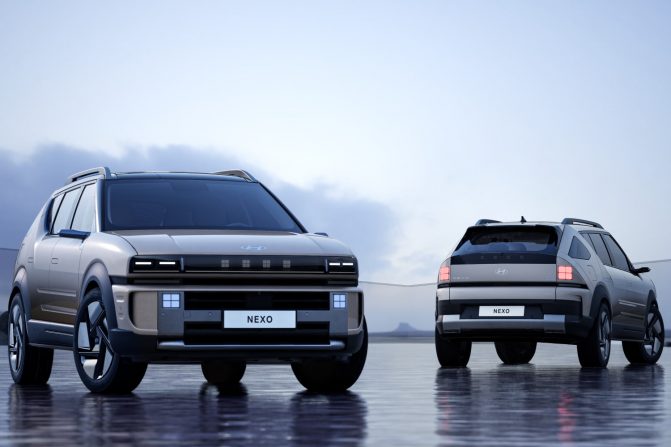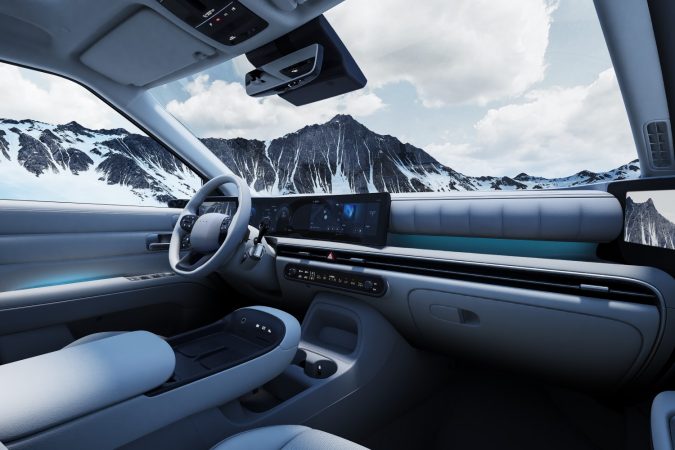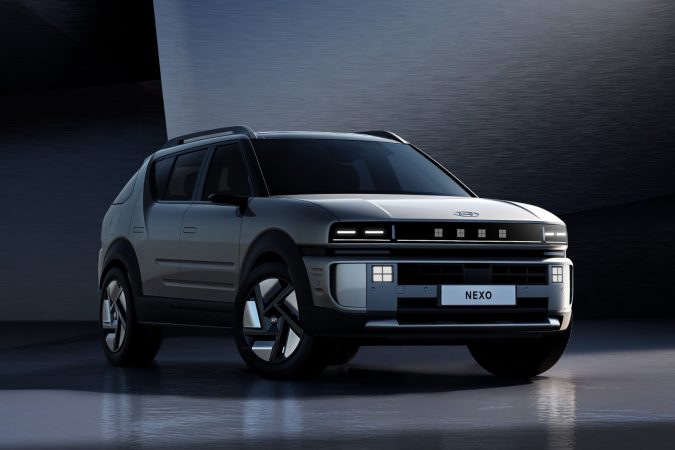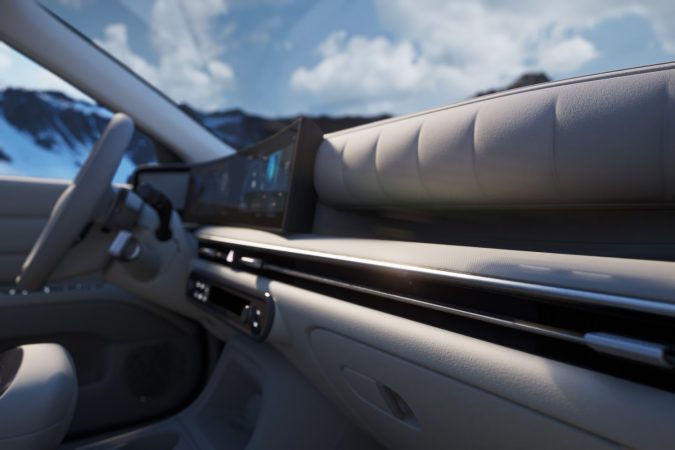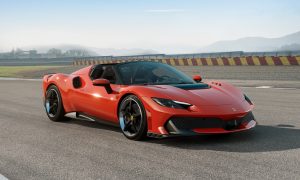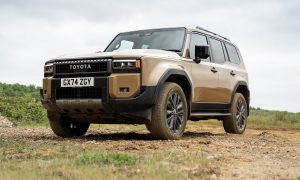Fuel cell EVs (or FCEVs, for short) have been somewhat touch-and-go in the car world, but not every carmaker is ready to give up on the idea just yet! The tech might be quite hard to refine, and the hydrogen infrastructure is nowhere near critical mass, but Hyundai thinks they have a shot at making this finally work. Cue the all-new Hyundai NEXO, with a shiny new second-gen hydrogen fuel cell stack that promises over 700 km of range, and filling it up only takes a quick 5-minute hydrogen refill. Underneath, the NEXO’s hydrogen 6.69 kg tank is paired to a 110 kW fuel cell stack (94 kW net), which is a rather neat 16% improvement over its predecessor.
These are then mated to a fairly potent 150 kW electric motor, outputting a pretty modest 350 Nm of torque. Once again, we see a noticeable upgrade over the old hydrogen tech, with their new NEXO fuel cell electric SUV promising better performance – a 0 to 100 km/h sprint done in just 7.8 seconds, marking a huge drop from the old FCEV’s 9.2 seconds. Plus, you may keep on driving confidently all day and night long, with some interesting anti-freeze and other systems to ensure performance and uncompromised range, regardless of the weather. Altogether, the new Hyundai NEXO has one of the longest ranges for any fuel cell electric vehicle, period.
Proof That A Hydrogen-Powered Future Still Exists
This is partly thanks to those enlarged hydrogen tanks, of which there are three inside the NEXO, totalling around 162.6 litres and holding up to 6.69 kg of hydrogen. This is another area where we can see incremental improvements over Hyundai’s last-gen FCEV system, where the tanks could only hold 6.33 kg previously. Even more impressive is the fact that Hyundai is able to boost the NEXO’s range by a noteworthy margin and add those larger tanks, without taking away interior space. Aside from that, another bit of tech with this new NEXO that’s worth a bit of a deep dive is the battery pack, which has grown from 40 kW to 80 kW in the new NEXO.
Of course, just like Hyundai’s BEVs that run purely off lithium-ion batteries, the NEXO FCEV can enable you to make use of functions and systems like V2L (vehicle-to-load), too. Moreover, the NEXO FCEV has a clever Smart Regenerative System (SRS), which can dynamically adjust the brake regeneration using navigation and traffic data. Otherwise, the NEXO could use the car’s Predictive Efficiency Assistant system, where it once again uses mapping and satnav data to help the powertrain optimise its cruising, idling, and brake regen. More to that, the new Hyundai NEXO is the first FCEV to offer proper towing capability, easily handling 1,000 kg.
Blending The Art Of Steel & Hydrogen Fuel Cells
Now, as cool as all this tech is, it’s nice to see that Hyundai’s wrapped them up in a handsome package. So-called Hyundai’s ‘Art of Steel’ design language, I do quite like the NEXO’s squared-off, bold, sharp lines, with angles aplenty! That sculpted bodywork does invoke a familial style shared with some of Hyundai’s IONIQ EVs, with a healthy dose of retro-futurism thrown in for good measure. The NEXO’s distinctive 4-dot lighting signature also reminds us about Hyundai’s HTWO, which is a new sub-brand where they’ll market and sell FCEVs just like the NEXO. Step inside the NEXO, and you get a seat made of eco-friendly and sustainable materials and upholstery.
This includes a bevvy of bio-process leather, recycled PET fabrics, bio-plastic skins, as well as a few other eco-materials, mainly on the seats, panels, and the headliner. In addition to the big 12.3-inch instrument cluster and infotainment system, the NEXO’s cleverness extends to your in-car storage, with ample compartments and cubbies to stow away extra stuff. Besides that, you still get a massive boot, up to 993 litres in size, and you can increase it even further up to 1,719 litres with the rear seats folded down. All in all, the NEXO sounds like another clear-cut winner from Hyundai in the FCEV space, and you can expect a global rollout later in 2025.

